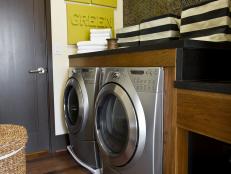Maximum Value Energy Efficiency Projects: Insulation
Reducing energy costs throughout the home is important, but without properly sealing and insulating the shell of the home, other energy incentives may not function at full capacity. In fact, when consulting a professional, you can save up to 20 percent on heating and cooling costs by sealing and insulating the entire home.
CURRENT TRENDS
- Green insulation. For the more eco-minded homeowner, working with natural, sustainable materials is more appealing than synthetic insulation. With many options to choose from such as: cotton, sheep's wool, straw and hemp, you can be good to the environment and your wallet with these easily obtainable materials. The four natural options mentioned have been tested by the Department of Energy and have been found to retain R-values similar to synthetic materials while also retaining the benefit of being completely non-toxic. You won't ever have to worry about wearing a mask when installing any of these green materials.
BIGGEST MISTAKE
The biggest mistake homeowners can make when looking to properly insulate their home is not understanding what kind of insulation their particular home needs. The climate and home size play a huge part in how effectively you seal your home. According to appraisal expert, Leslie Sellers, president of the Appraisal Institute, homeowners should "know what's recommended, gather the facts first and then purchase."
Insulation is measured by its resistance to heat flow -- which is more commonly called the R-value. The higher the R-value, the more effectively the insulation works. The R-value is determined by the type of insulation used, its thickness and density. A high R-value is also dependent on where in the home the insulation is used, how it is used as well as the climate of the area. The coldest climates can be given an R-value as high as R-49.
Sellers says it's best to work with a contractor, or if you choose to take on a DIY project, consult a local home improvement professional who can help you find the correct R-value for your home to maximize efficiency and save the most money overall.
EXPERT TIPS
- On a Budget: The easiest -- and most efficient -- place to seal air leaks and add insulation is always the attic. This can be turned into a DIY project if you have the time and want to cut costs. According to Energy Star, the best way to see if you need more insulation is to look across your uncovered attic floor. If the insulation you already have is level with or below the floor joists, it's best to add more insulation. The Department of Energy and Energy Star recommend the insulation level for most attics is R-38, which is about 12 inches to 15 inches depending on the insulation type.
- Mid-Range/High-End: To make sure the entire home is properly insulated, you can hire a contractor who -- through an energy audit -- will use special diagnostic tools to pinpoint and seal the hidden air leaks in your home. A Home Energy Rater -- partnered with Energy Star -- can help you find contractors that offer local air sealing services. By hiring a professional to tackle the work, expenses will be more costly, but you can rest assured that your home's insulation is working most efficiently and at maximum capacity.




































